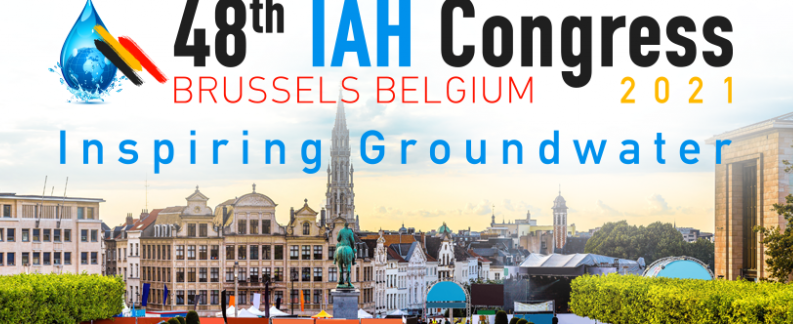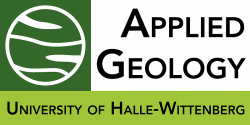Presented research
Defining protection zones around closed and open shallow geothermal installations in urban aquifers
Guillaume Attard, Peter Bayer, Philipp Blum, Laurent Eisenlohr
There is a growing interest in using subsoil and groundwater as a source of geothermal energy to meet heating and cooling demands. The development of these shallow geothermal systems, combined with the presence of multiple urban heat sources leads to thermal stress on urban aquifers and potentially to thermal interference between neighboring geothermal installations, resulting in a deterioration of their efficiency. In France, the mining code requires the definition of a protection zone around shallow geothermal installations extracting more than 500 kW or 80 m3/h. This protection zone confers an exclusive exploitation right in the area precisely to prevent a geothermal project from being disrupted by other/future installations. Until now, the application of this legal requirement relied on empirical concepts that do not always allow for (1) an equitable distribution of the geothermal potential and for (2) the durability of a project’s efficiency. Hence, we developed a novel methodological framework based on the site-specific hydrogeological conditions, defining protection zones around closed and open shallow geothermal installations: small enough to maximize the distribution of the resource, and large enough to protect the installation.
Groundwater warming in Central Europe
Peter Bayer, Susanne Benz, Hannes Hemmerle, Kathrin Menberg, Maximilian Noethen, Philipp Blum
The continuous rise of air temperatures as a consequence of climate change also leaves its trace in the subsurface. The thermal regime of shallow aquifers is strongly coupled with the conditions in the atmosphere, and thus long-term records of groundwater temperatures meanwhile reveal significant warming trends at many locations. The focus of our work is on aquifers in Central Europe. We combine different types of measurements and data from wells in rural and urban environments to track thermal changes in shallow groundwater. These include time series of well temperatures logged in-situ over years, and repeated temperature profiles in wells and closed-loop borehole heat exchangers. Depending on the type of data, time series analysis, analytical heat transport modelling, borehole temperature inversion as heat balance calculations are applied to identify the intensity of shallow subsurface warming. This site-specific data processing is also needed to distinguish effects from local heat sources that often exist especially in built-up areas, and which often enhance groundwater temperatures on the local scale. Independent of the data inspected, there is a clear warming trend found at most locations. For example, in southern Germany, repeated temperature profiles over around 30 years indicate slightly delayed and attenuated warming in shallow aquifers in comparison to the trends in the atmosphere. The median value of 32 wells in the state of Bavaria reaches 0.28 K increase per decade for the reference depth of 20 m. Similar increase rates are found in permanent logs of wells in other regions of Germany and Austria, but typically highly depending on the conditions at the site, and often enhanced temperatures are associated with local anthropogenic impact or land use changes.
Long-term groundwater temperature trends in Cologne, Germany
Hannes Hemmerle, Philipp Blum, Chun Liu, Peter Bayer
Shallow ground and groundwater temperature in urban areas exhibit large scale temperature anomalies compared to rural settings. These typically elevated temperatures have been traced back to numerous anthropogenic heat sources, that accumulate especially in urban areas into large-scale heat carpets in the shallow subsurface. These subsurface urban heat islands are typically described in steady-state for a respective point in time. This is due to the low number of reliable observations in urban areas and to the general data scarcity in the subsurface. In our contribution we present an approach that fuses data from the past five decades from groundwater quality measurements, level-logger temperature and temperature-depth profiles for the urban aquifer beneath Cologne, Germany. Even though temperature is recorded nearly for all groundwater and surface water quality measurements, these data are typically treated as a side product and rarely analysed. In addition, modern groundwater level loggers also record temperature which resolves in single-depth timeseries typically 1 to 3 m below groundwater level. Temperature-depth profiling has been the go-to method for most studies of urban subsurface temperature, because of the high-precision and information residing in the depth resolution. However, profiling is almost exclusively performed by academic institutions and therefore these data are very scarce both in time and space. Preliminary results of the fused temperature data reveal a general warming trend in the same magnitude as atmospheric temperature change between 0.3 and 0.4 K per decade (data from 1970 to 2020). In addition, the rates of temperature change indicate a moderate correlation to the rate of urbanization. Using ordinary least-square regression we were able to build a basic statistical model of the temperature distribution from 1973 onwards. This is probably one of, if not the richest temperature archive of city-wide subsurface temperature records world-wide and a unique opportunity to study urban subsurface temperature variations in response to local anthropogenic overprinting and regional climate change.
Imaging hydraulic conductivity in near-surface aquifers by cross-borehole Induced Polarization
Lukas Römhild, Gianluca Fiandaca, Peter Bayer
Precise knowledge about the distribution of hydraulic conductivity (K) in an aquifer is essential for groundwater flow modeling, assessment of contaminant transport and other water resource management issues. In addition to classical hydrological tests, geophysical methods, especially ‘Induced Polarization’ (IP), are gaining ground in their ability of imaging K heterogeneities. Based on a solid foundation of petrophysical relations between certain IP parameters and K derived from laboratory experiments, this method is capable of retrieving detailed information about the hydraulic conductivity distribution. In our new approach, those empirical laws are directly incorporated into the inversion procedure of IP data, which yields images of K that can have a high resolution (depending on the measurement setup, e.g. electrode spacing) and quantitative accuracy.While IP measurements are typically carried out from the surface only, cross-borehole setups enhance the sensitivity to heterogeneities in deeper regions and thus improve the resulting K images. This approach is employed within a modelling study, including the forward modelling of IP data from a given K distribution and the subsequent IP inversion. As input datasets, the porosity and hydraulic conductivity distribution of three sedimentary aquifer analogs – namely Herten, Descalvado and Bolstern – are used. In comparison to purely synthetic models, they provide real-world datasets, that are particularly challenging for the inversion due to the complex sedimentary structures and the contrast of decimeter-scale. The IP forward response was computed using a setup combining surface and borehole electrodes with 0.25m spacing. The K image resulting from the IP inversion correctly shows the main features of the analog and the quantitative estimates of K correspond well with the real data. However, some small-scale structures cannot be reconstructed due to the limited resolution resulting from the given electrode spacing. Since the same petrophysical assumptions are made within the forward modelling and the inversion procedure, their accuracy cannot be tested directly by this modelling study. Thus, the approach was also applied to existing field data that include borehole IP logs as well as measurements of hydraulic properties. We find that the IP-derived K estimates agree very well with the K values gained from grain size analyses and slug tests. In the future, new field experiments are planned to apply this methodology in practice and to compare the results with K images gained from pumping tests (e.g. applying hydraulic tomography) conducted at the same site.
Image-based priors for probabilistic inversion of nonstationary hydrogeological fields through conflict-handling direct sampling
Hesam Soltan Mohammadi, Gregoire Mariethoz, Peter Bayer
An omnipresent research topic in hydrogeological modeling is the resolution of inverse problems in complex and heterogeneous geological settings. The heterogeneity of hydrogeological systems and the sparsity of data lead to uncertainty, which critically needs to be quantified. Due to the inherent limitations of multi-Gaussian priors in representing complex structures, the idea of using non-parametric geological image(s) as priors in stochastic inversion problems has emerged recently. Multiple Point Statistics (MPS) algorithms are suitable for integrating these non-parametric priors under the form of training images (TIs). More precisely, a TI is a conceptual prior model that mimics the subsurface spatial structure and continuity. In this study, we investigate the applicability of a workflow for inverse problems in nonstationary fields because of the simplicity and open-source availability of the constituents. To this end, we benefit from conflict-handling direct sampling (CHDS) as the prior sampler, the finite-volume algorithm MaFloT as the forward model, and a simple rejection sampler to explore the posterior. CHDS is a two-step multiple-point geostatistics simulation algorithm that is an extension of well-known direct sampling. In the first step of simulation by CHDS, the coarse and general structure of the proposal prior is generated with minimal conflicts by rejecting inconsistent spatial patterns and allowing the removal of previously simulated data. The detailed structure of the patterns which is considered as the fine grid is simulated in the second step by ignoring the conflicts. CHDS is able to represent the long-range connectivity and curvilinear patterns to model the complex heterogeneities that play a substantial role in subsurface flow and transport. Our application case is a synthetic nonstationary fluvial-aquifer characterized by the presence of curvilinear sand-filled channels within a background of mudstone. CHDS makes it possible to generate the prior models by directly sampling from the TI instead of drawing the samples from probability distributions functions. After the generation of an ensemble of proposal models, for each of the prior models, steady-state groundwater flow is simulated using MaFloT. Consequently, by a likelihood function, the conformity level of the simulated results with the measured data is evaluated. Finally, the posterior function is reproduced by a rejection sampling procedure for our 2D scenario due to its simple implementation and computational feasibility, contrarily to more sophisticated methods. The proposed method shows promising results in terms of connectivity preservation, pattern variability, and posterior reproduction.




